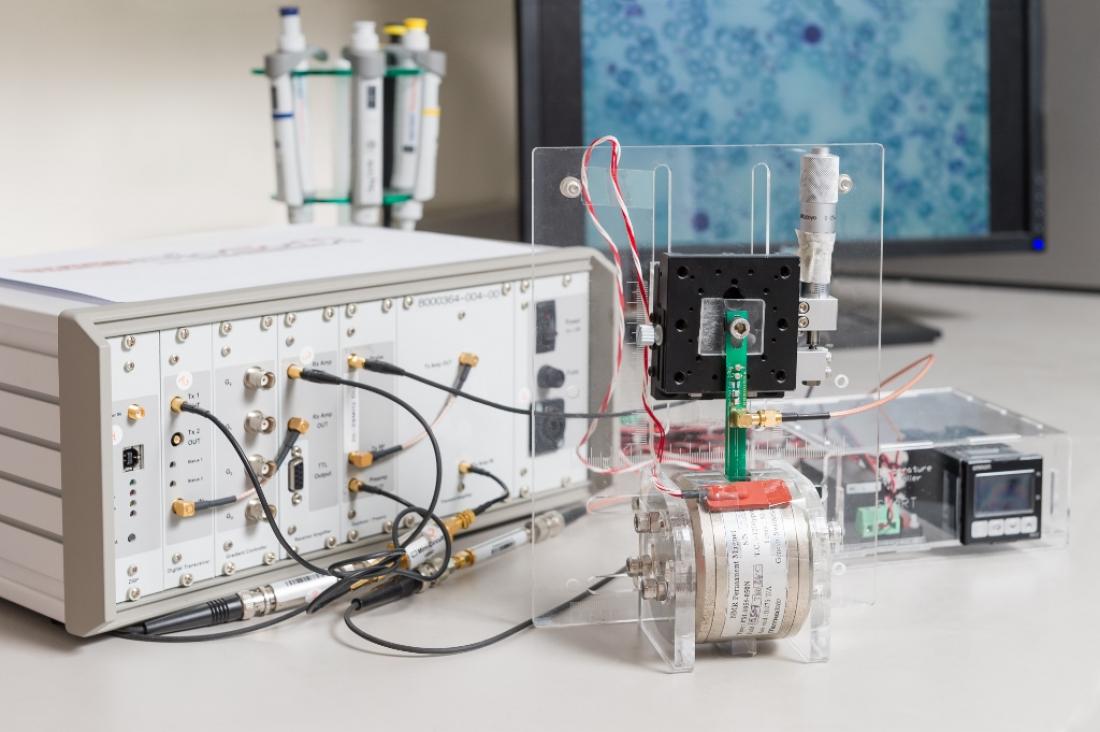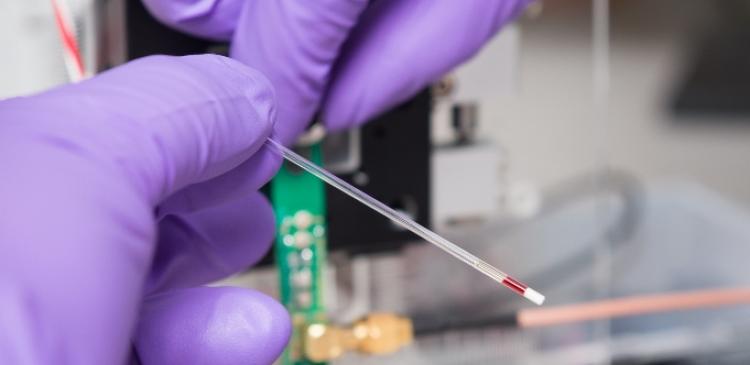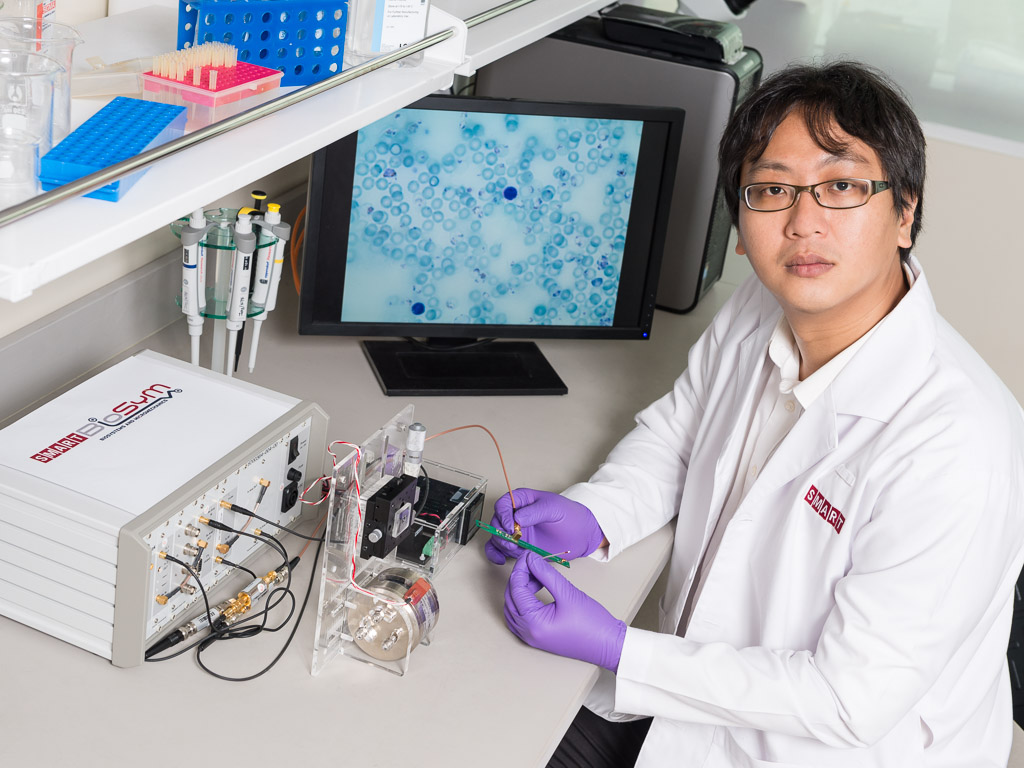SMART developed the low-cost benchtop Magnetic Resonance Relaxometry system for rapid label-free malaria screening.
A team of Singapore scientists have invented a new technique to detect malaria within minutes and all that is required is a drop of blood.
Malaria is a mosquito-borne parasite which affects over 60 million people worldwide and could be fatal in serious cases. It is still a huge problem in developing countries because there is no vaccine for malaria while antimalarial drugs are losing their efficacy with increasing drug resistance on the rise.
The research entitled ‘Micromagnetic Resonance Relaxometry for rapid label-free malaria diagnosis’ was published online on 31 Aug 2014 in the prestigious scientific journal Nature Medicine. This innovative technique is developed by the Singapore-MIT Alliance for Research and Technology (SMART) [新加坡-麻省理工学院科研中心] in collaboration with Nanyang Technological University (NTU).
With this disruptive new technology, hospitals may soon have the ability to rapidly screen and monitor hundreds of patients at the point-of-care for malaria, at much lower cost per patient.
Despite technological advances, currently malaria infection is still detected via stained blood smear microscopy. Lab technician will need to spot the tiny parasitized red blood cells among millions of healthy uninfected red blood cells, especially in the case of early infection, which is like finding a needle in a haystack. It is not only time-consuming and labour-intensive but also often not conclusive as it is highly dependent on the subjective judgement of the microscopist. Therefore, a false-positive call is not unusual.
Other malaria diagnostic techniques such as the Polymerase Chain Reaction (PCR) also have limitations as it is not field-deployable and can only provide semi-quantitative analysis.
SMART new technique
The solution developed by the SMART team since 2010, works by detecting the biomarker hemozoin crystallites, the metabolic waste product of malaria parasites during the intra-erythrocytic* cycle As the technique uses miniaturized Magnetic Resonance Relaxometry (MRR) system, a cousin of Magnetic Resonance Imaging (MRI), it is also more sensitive, accurate and faster than traditional methods.
The technique detects malaria infections at a very early stage, even when the amount of parasites in the blood is extremely low. It was successfully proven in mouse studies, where the presence of malaria parasites was detected at the very next day of infection. Moving forward the team is currently working on human study at clinical settings.
At the onset of malaria, the malaria parasites “eat up” large amount of haemoglobin^ and converts them into hemozoin crystallites. These crystallites are basically oxidized iron nanoparticles (Fe3+), making them way more “magnetic” than the healthy red blood cells, which can be easily picked up by the miniaturized MRR developed by SMART.
Professor Han Jongyoon, Principal Investigator from SMART’s BioSystems and Micromechanics (BioSyM) Interdisciplinary Research Group (IRG), said: “This system is more reliable and allows for rapid screening to be conducted. So, given the flux of people moving in and out of developed nations especially, this system has the potential to help prevent mass import of malaria by infected persons. For developing nations, this system, which does not require refrigeration or other extensive infrastructure, is portable enough to be deployed in rural areas, to help rapidly screen for malaria and hence stem the spread of this infectious disease.”
Professor Peter Preiser, SMART co-Investigator and Chair of NTU’s School of Biological Sciences said that the new test has the additional potential to rapidly detect parasites that are resistant to anti-malarial drugs particularly artemisinin thereby providing a valuable tool in trying to prevent the global spread of these resistant parasites.
“Importantly, rapid and accurate diagnosis will reduce the prescription of drugs to non-infected people - one factor that contributes to why we are seeing more malaria parasites developing resistance to anti-malarial drugs,” said Prof Preiser, a renowned expert in malaria.
“With a more accurate and sensitive detection system like the one we developed, doctors can better diagnose malaria infections in patients. We need to ensure that drug resistance is kept to the minimum because these drugs are really our last line of defence in helping malaria-stricken patients.”
SMART Research Scientist Dr Brian Peng Weng Kung and lead author of the paper, added: “The significant part of this research lies in the fact that this system is practically a “mini MRI” system that is much cheaper to produce than the million-dollar MRI machines used by hospitals. We built tiny radiofrequency (rf) coil which is used to apply rf-pulses and receive signal from a drop of blood, and the whole detection process happens in a few minutes. Furthermore, since this technique does not rely on immuno-assay# labelling that requires expensive chemical reagents, we are able to bring down the screening test cost to less than S$0.10 per test.”
SMART is now spinning off a company to commercialise this technology, which could also work for other types of blood disorders. Moving forward, the research team is also setting up field-tests in the South-East Asia region. They are testing if the system can be run on solar power, which will be useful in rural areas, where electricity is scarce. This research is funded by the Singapore National Research Foundation, Prime Minister’s Office, Singapore under its Campus for Research Excellence And Technological Enterprise (CREATE) programme.
Media contact:
Pauline Teo
Corporate Communications Specialist
SMART
Tel: 6601 3354
Email: [email protected]
Nur Amin Shah
Assistant Manager (Media Relations)
NTU
Tel: 6790 6804
Email: [email protected]
*Intra-erythrocytic: Occurring within the red blood cells
^Haemoglobin: A protein in red blood cells that carries oxygen
#Immunoassay: A test that uses antibody and antigen complexes as a means of generating a measurable result





